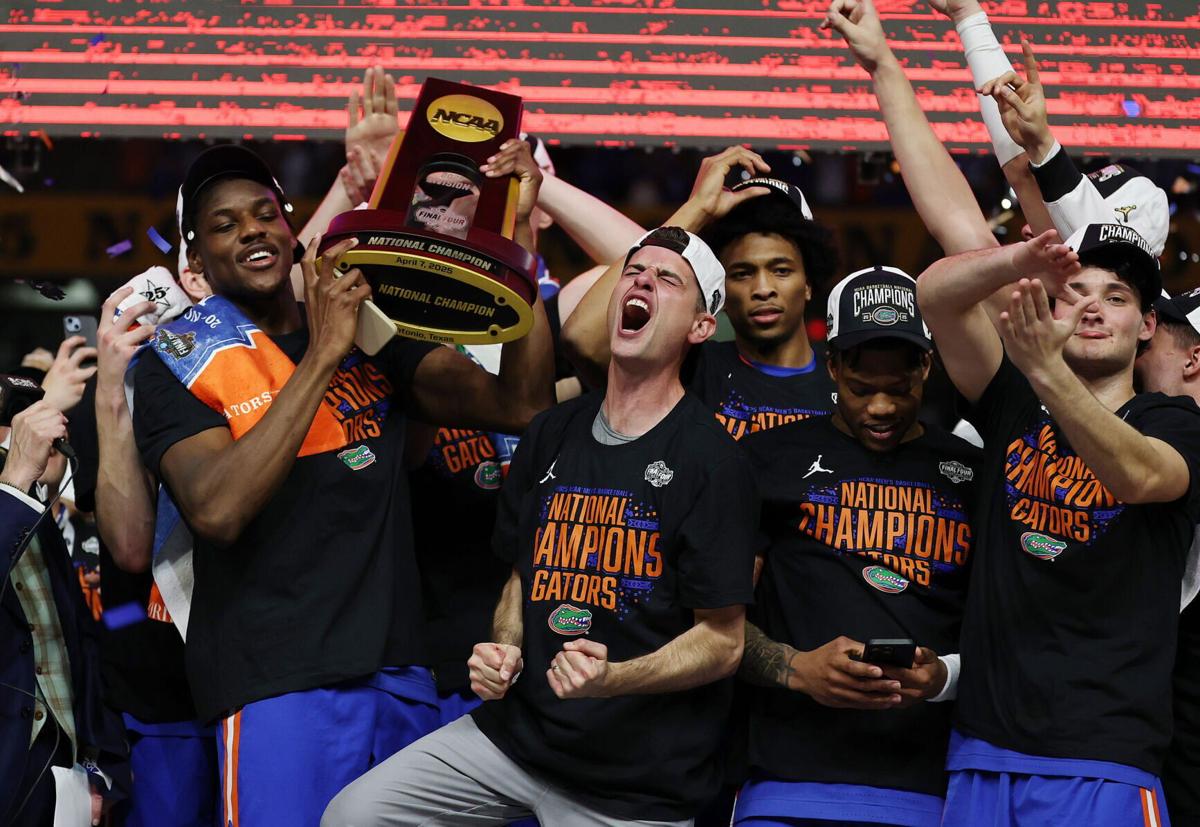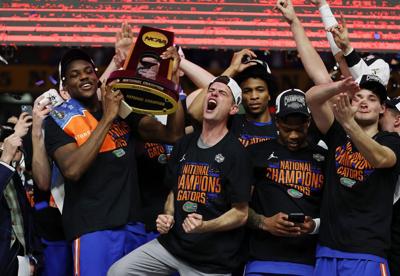LEXINGTON, Ky. — By the time you read this, the Division I men’s basketball committee may have announced an expansion of the NCAA tournament fields for future renewals of March Madness for both men’s and women’s basketball.
It is widely expected that the current 68 team NCAA tourney bracket will be expanded moving forward to either 72 or 76 teams.
In a college sports world of unceasing contention, the one thing almost everyone agrees on is that the NCAA men’s basketball tournament is an American sports jewel.
So, of course, the college athletics “powers that be” are determined to mess with that success.
It would be silly to say adding four or eight teams to the existing field of 68 will “ruin” March Madness. It won’t.
But, for multiple reasons, expanding the field will weaken the NCAA tournament and college basketball overall.
People are also reading…
Those who favor expansion like to point out that there were 282 NCAA Division I basketball programs in 1985 when the tournament bracket first grew to 64 teams. Last season, there were 364 D-I programs feeding into a 68-team NCAA tourney.
Led by SEC commissioner Greg Sankey, the “expansionists” have taken to clamoring for a larger NCAA tourney bracket as a matter of “access.”
As Matt Norlander of showed this week via expansive research, the claims that the growth in the number of Division I teams has negatively impacted the chances for power-league schools to make the NCAA tourney do not hold up to scrutiny.
Almost every one of the teams new to Division I since 1985 have entered so far down the conference “food chain,” they are not competing for at-large bids. Simply put, the presences of Bellarmine and Northern Kentucky in D-I have zero impact on the chances of Kentucky and Louisville making March Madness via at-large bids.
The idea that deserving teams are routinely being left out of March Madness as presently constituted is also contradicted by the evidence.
In the just-concluded men’s hoops season, the first four teams omitted from the NCAA tourney were West Virginia (19-13), Indiana (19-13), Ohio State (17-15) and Boise State (24-10).
Among the last four teams into the field were North Carolina (which was 1-12 vs. Quad 1 opponents) and Xavier (1-9 in Quad 1 games).
Rather than deserving teams being left out of last year’s NCAA tourney, undeserving teams had to be included just to fill the 68-team bracket.
That reality was not a one-year anomaly. In 2024, the first four teams out of the NCAA tournament were Oklahoma (20-12), Seton Hall (20-12), Indiana State (28-6) and Pittsburgh (22-11).
For 2023, the first four teams omitted from the NCAA tourney were Oklahoma State (18-15), Rutgers (19-14), North Carolina (20-13) and Clemson (23-10).
Of the 12 combined teams among the first four out in the past three NCAA tournaments, only Indiana State in 2024 had a meritorious claim for inclusion.
Alas, the driving impetus behind NCAA tourney expansion is not to provide access for deserving teams from “smaller” leagues — such as the Sycamores out of the Missouri Valley Conference.
It is to create more March Madness access for power conference mediocrities.
Growing the NCAA tourney not only will lessen the achievement of earning an NCAA tournament berth, it will also further dilute the college hoops regular season.
In the big picture, the greatest problem facing college basketball is that the regular season carries so little consequence.
The three weeks of March Madness are the best on the American sports calendar. However, the overall college hoops season has become devalued because there are so few regular-season games whose outcomes carry meaningful ramifications.
Adding teams to the NCAA tourney field each year would ensure there are even fewer regular-season games that carry actual consequence.
Enlarging the number of NCAA tournament teams is also potentially detrimental to the fan experience of March Madness. What made the NCAA tourney into a must-see national event is fans filling out 64-team brackets to enter in tournament pools.
The more complicated that completing a bracket becomes, the greater the risk seems that casual hoops fans could “check out” on March Madness.
Even with so much that argues against NCAA tournament expansion, the reason it appears on the verge of happening is that the major conferences — the ACC, Big Ten, Big 12 and SEC — have grown so powerful that they can free themselves of the consequences of their own actions.
The ACC and Big Ten now each have 18 members; the Big 12 and SEC are at 16 schools apiece. Leagues that large are at annual risk of seeing their teams “eat their own” in head-to-head conference play with the result being NCAA tourney exclusion.
For the SEC’s Sankey and other power-league commissioners, the push to expand the NCAA tournament is a move to protect their member schools from the repercussions of having formed mammoth “super-leagues.”
That growing March Madness will be bad for the NCAA tournament itself, bad for college basketball as an institution and mostly bad for hoops fans seems immaterial to those with the power to decide.
____


















